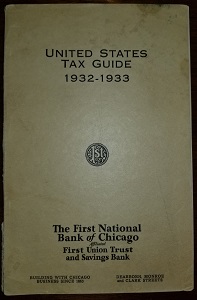
Photo credit: jb
There are generally two ways that the IRS can assess a penalty to you – failure to file, or failure to pay; and it’s not out of the question that you could be subjected to both types of penalties. There are many other penalties, such as accuracy-related penalties, that may also apply. Listed below are some facts from the IRS about penalties.
Facts on Penalties
- If you do not file by the deadline, you might face a failure-to-file penalty. If you do not pay by the due date, you could face a failure-to-pay penalty.
- The failure-to-file penalty is generally more than the failure-to-pay penalty. So if you cannot pay all the taxes you owe, you should still file your tax return on time and explore other payment options in the meantime. The IRS will work with you.
- The penalty for filing late is usually 5% of the unpaid taxes for each month or part of a month that a return is late. This penalty will not exceed 25% of your unpaid taxes.
- If you file your return more than 60 days after the due date or extended due date, the minimum failure-to-file penalty is the smaller of $485 or 100% of the unpaid tax.
- If you do not pay your taxes by the due date, you will generally have to pay a failure-to-pay penalty of ½% of your unpaid taxes for each month or part of a month after the due date that the taxes are not paid. This penalty can be as much as 25% of your unpaid taxes.
- The ½% increases to 1% if the tax remains unpaid 10 days after the IRS issues a notice of intent to levy property. If you file your return by its due date and request an installment agreement, the one-half of one percent rate decreases to one-quarter of one percent for any month in which an installment agreement is in effect.
- Be aware that the IRS applies payments to the tax first, then any penalty, then to interest. Any penalty amount that appears on your bill is generally the total amount of the penalty up to the date of the notice, not the penalty amount charged each month.
- If you timely filed a request for an extension of time to file and you paid at least 90% of your actual tax liability by the original due date, you will not be faced with a failure-to-pay penalty if the remaining balance is paid by the extended due date.
- If both the failure-to-file penalty and the failure-to-pay penalty apply in any month, the 5% failure-to-file penalty is reduced by the failure-to-pay penalty. However, if you file your return more than 60 days after the due date or extended due date, the minimum penalty is the smaller of $485 or 100% of the unpaid tax.
- You will not have to pay a failure-to-file or failure-to-pay penalty if you can show that you failed to file or pay on time because of reasonable cause and not because of willful neglect.
- Generally, interest accrues on any unpaid tax from the due date of the return until the date of payment in full. The interest rate is determined quarterly and is the federal short-term rate plus 3 percent. Interest compounds daily.


 Sterling Raskie, MSFS, CFP®, ChFC®
Sterling Raskie, MSFS, CFP®, ChFC® The latest in our Owner’s Manual series, A 401(k) Owner’s Manual, was published in January 2020 and is available on
The latest in our Owner’s Manual series, A 401(k) Owner’s Manual, was published in January 2020 and is available on  A Medicare Owner’s Manual, is updated with 2020 facts and figures. This manual is available on
A Medicare Owner’s Manual, is updated with 2020 facts and figures. This manual is available on  Social Security for the Suddenly Single can be found on Amazon at
Social Security for the Suddenly Single can be found on Amazon at  Sterling’s first book, Lose Weight Save Money, can be
Sterling’s first book, Lose Weight Save Money, can be  An IRA Owner’s Manual, 2nd Edition is available for purchase on Amazon. Click the link to choose the
An IRA Owner’s Manual, 2nd Edition is available for purchase on Amazon. Click the link to choose the  Jim’s book – A Social Security Owner’s Manual, is now available on Amazon. Click this link for the
Jim’s book – A Social Security Owner’s Manual, is now available on Amazon. Click this link for the  And if you’ve come here to learn about queuing waterfowl, I apologize for the confusion. You may want to discuss your question with Lester, my loyal watchduck and self-proclaimed “advisor’s advisor”.
And if you’ve come here to learn about queuing waterfowl, I apologize for the confusion. You may want to discuss your question with Lester, my loyal watchduck and self-proclaimed “advisor’s advisor”.